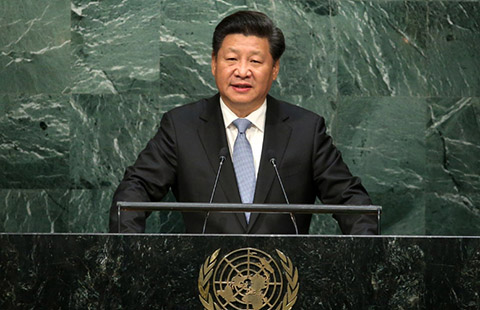
BEIJING - China's leadership and policymakers will convene in October to set the development course for the world's second largest economy over the next five years (2016-2020).
Following are some facts and figures about how the country has delivered on its goals for the 2011-2015 period.
GROWTH
Target: GDP growth of 7 percent annually on average
Delivery: Growth came in at 9.3 percent in 2011, 7.7 percent in 2012, 7.7 percent in 2013 and 7.3 percent in 2014. For the first half of the year, China's economy expanded 7 percent, and authorities have repeatedly voiced confidence in achieving the annual target of around 7 percent for 2015.
INFLATION
Target: Prices to be kept generally stable
Delivery: Annual consumer inflation came in at 5.4 percent in 2011, 2.6 percent in 2012, 2.6 percent in 2013 and 2 percent in 2014. Economists forecast mild inflation for 2015.
JOB MARKET
Target: More than 45 million jobs to be created in urban areas; Urban registered unemployment to be kept no higher than 5 percent.
Delivery: China created a total of 50.79 million jobs in urban areas for the 2011-2014 period. A total of 7.18 million new jobs were added in the first half of 2015.
The urban registered jobless rate held steady at 4.1 percent through 2011-2014. The rate stood at 4.04 percent at the end of June 2015.
ECONOMIC RESTRUCTURING
Target: Rise in domestic consumption; Service sector value-added output to account for 47 percent of GDP; Urbanization rate to reach 51.5 percent, up 4 percentage points.
Delivery: Consumption accounted for 60 percent of GDP growth in the first half of 2015, 13.1 percentage points higher than the share in 2010.
The service industry accounted for 49.5 percent of GDP in the first half of 2015. In 2010, the share was 39.2 percent.
China's current urbanization rate in China stands at about 55 percent.
ENVIRONMENT
Target: Non-fossil fuel to account for 11.4 percent of primary energy consumption; Energy consumption per unit of GDP to be cut by 16 percent; Carbon dioxide emissions per unit of GDP to be cut by 17 percent; Forest coverage rate to rise to 21.66 percent and forest stock to increase by 600 million cubic meters.
Delivery: Non-fossil fuel accounted for 11.2 percent of primary energy consumption by 2014.
According to calculations by Xinhua based on official statistics, energy consumption per unit of GDP dropped 13.4 percent by 2014 from the 2010 level. If China is to meet the target, consumption needs to fall 3 percent year on year in 2015. In the first half of the year, energy consumption per unit of GDP went down 5.9 percent.
SOCIAL WELFARE
Target: Construction and renovation of 36 million apartments for low-income families.
Delivery: A total of 39.7 million affordable housing units will begin construction by the end of 2015, topping the 36 million target set for the 2011-2015 period.
REFORM
Target: In-depth reform in monopoly industries for easier market entry and more competition;
Delivery: China's top oil refiner Sinopec in 2014 said that it would bring in social and private capital to jointly market and sell its oil products, making it the first largely monopolized sector to open up.
China's Industry and Information Technology Ministry in 2014 licensed six more private enterprises to pilot resale of certain mobile services, allowing them to partner and compete with China's "backbone" telecom operators through the resale of mobile services.
Target: Improved government efficiency and credibility.
Delivery: Since 2013, China's State Council has been streamlining government administration to reduce government control and unleash market vitality.
In two years, more than 700 approval items controlled by central government departments have been canceled or delegated to lower agencies, and more than a third of all approval items handled by the State Council were cut or decentralized.








